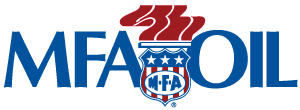Non-energy Commodity Prices Peak
June 16, 2021
From the AP. The monthly gain in the producer price index, which measure inflation pressure before it reaches consumers, following a 0.6% increase in April and a 1% jump in March, the Labor Department reported on Tuesday. Food prices jumped a sizable 2.6% with the cost of beef and veal rising, though the cost of fresh fruits declined. Energy cost rose 2.2%, reversing a 2.4% drop in April. Over the past 12 months, wholesale prices are up 6.6%, the largest 12-month increase on records going back to 2010.
From John Kemp of Reuters. Non-energy commodity prices hit their highest level last month for almost a decade since September 2011, while the annual rate of increase was the fastest for 47 years since May 1974, based on an index compiled by the World Bank.
Crude oil prices were able to hold up and trade higher yesterday as refined fuels products were under some sell pressure. This has resulted in crack spreads falling, both the RBOB crack and the ULSD crack. Those spreads pulling back give the indication that RBOB and ULSD have lost momentum. The news have been much of the same so without some new push prices are likely to congest in the near term.
The API showed a big decline in crude oil stock calling them down 8.5 million barrels and the crude stocks at Cushing, Ok were down 1.5. Gasoline stocks were up 2.9 million barrels and distillates were up 2.0 million barrels. The market will now see how today’s government DOE report comes out in comparison to the API. Average estimates are calling for crude to be down 2.751 million barrels, gasoline up 1.028 and distillates up 2.075 million barrels.
There are several outlooks today that are calling for strong prices for crude oil with the lack of capital investment in oil and gas being the biggest factor that will lead to low supplies. The other factor is strong demand helped by the vaccination rollout and stimulus. Goldman Sachs Economic Research increased its estimates for Saudi Arabia’s oil production by about 500,000 bpd to 10 million bpd by the end of 2021. It sees that with oil prices rising above $70 dollars per barrel, it see risks in the oil sector as being significantly skewed to the upside. Goldman Sachs does not rule out oil prices reaching $100 per barrel. Vitol’s CEO, Russell Hardy, sees the return of Iranian oil in September-November of this year. He said oil prices could increase to $78 per barrel later this year. He added that OPEC+ discipline will support prices and see oil prices around $70-$80 per barrel this year. Gunvor’s CEO said oil prices are expected to remain high in the near to medium term. The company said underinvestment could lead to an oil supply shortage. Glencore’s head of oil and gas marketing, Alex Sanna, said oil is set to “move higher from here” following increased vaccinations and inflationary pressures. He said global demand is likely to return to pre-COVID levels by the third quarter. Trafigura’s CEO, Jeremy Weir, said there is a chance oil prices will reach $100 per barrel due to a lack of supply. Trafigura is concerned about oil supply do to a lack of capital expenditures. Audurand Capital Management’s Founder and CEO Pierre Andurand, said high oil prices have been driven by OPEC+ cuts and high compliance.
A lot of bullish out looks. The US shale supply rebound may be a very critical part of the supply picture. Most outlooks have been pretty tame on this supply, but higher prices of oil make it easy to go drill for more. Supply and demand picture will be watch going forward for price clues.

